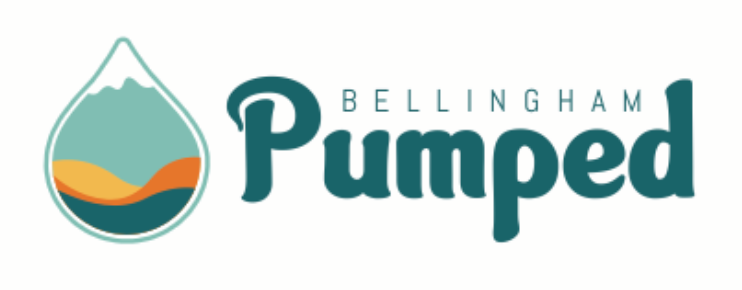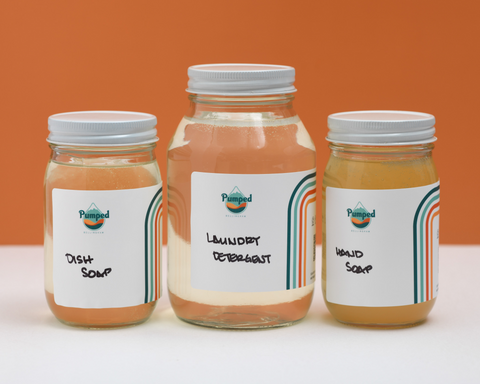Cleaning products are a staple in every household, from dish soap to laundry detergent. But have you ever wondered what those ingredients listed on the labels actually mean? I’ve been testing products and reading ingredient labels for three years and still struggle at times. Understanding these labels is key to making informed choices about the products we bring into our homes. In this guide, we'll dive into the world of cleaning product labels and discuss why opting for all-natural, plant-based ingredients can be beneficial for you and the environment. If, in the end, you still have questions, we are here for you! Swing by the shop or message us. We are always learning right alongside you. If we don’t know the answers ourselves, please believe we will find out for you!
Why Decode Cleaning Product Labels?
Safety First:
- Many conventional cleaning products contain harsh chemicals that can be harmful to human health, especially if used improperly or in enclosed spaces.
- Understanding the ingredients helps you identify potential allergens or irritants that could affect you or your family members.
- Many people have reactions to products as basic as baking soda if used for prolonged periods. Avoiding products with harsh chemicals or artificial fragrances can save you the headache (literally) of bad reactions and long-term trial-and-error of testing various ingredients.
- Chemical-laden cleaning products can have a negative impact on the environment, polluting water sources and affecting wildlife. The old Dawn commercials showing that only their dish soap is powerful enough to cut through oils spills on baby duck feathers is dangerously misleading.
- Choosing eco-friendly products reduces your carbon footprint and supports sustainable practices.
- Not all cleaning products are created equal. Knowing what's in them can help you gauge their effectiveness for specific cleaning tasks.
- Natural ingredients can be just as effective as synthetic chemicals in cleaning while being gentler on surfaces.
Decoding the Labels: Key Ingredients to Watch For
Fragrances:- Look out for "fragrance" or "parfum" on labels. These terms can encompass a mix of undisclosed chemicals that may be harmful.
- Fragrances often contain Phthalates which have been shown to potentially cause endocrine disruption, respiratory issues, and reproductive and developmental issues. They are also bad for the environment because the phthalates are not chemically bound to the products they are added to, which means they can leach out over time and enter the environment. They are persistent in the environment and can accumulate in soil, water, and wildlife. This widespread contamination poses risks to ecosystems and organisms.
- Opt for products that use essential oils or specify natural fragrance sources.
- Surfactants are cleaning agents that reduce surface tension, aiding in dirt removal.
- Some surfactants, particularly those that are petroleum-derived or contain ethylene oxide (a known carcinogen), have raised concerns about potential long-term health effects. These may include endocrine disruption, developmental abnormalities, and even cancer, although the extent of these risks can vary depending on the specific surfactant and level of exposure.
- It is important to note that not all surfactants are created equal. Those that are petroleum-based derived from ethylene oxide are problematic. Check for plant-derived surfactants like coconut or corn-based alternatives, which are biodegradable and less harsh.
- Products require preservatives to extend shelf life. Common ones like parabens or formaldehyde can be harsh.
- Seek products with natural preservatives like essential oils or plant extracts.
- Sulfates, such as SLS (Sodium Lauryl Sulfate) or SLES (Sodium Laureth Sulfate), are foaming agents often found in cleaning products.
- These can be harsh on skin and the environment. Look for sulfate-free alternatives derived from coconut or sugar.
- There are also plant-derived sulfates that have been shown to be milder and do not cause skin and eye irritation the way petroleum-based sulfates do. They are also typically produced in a more sustainable way than their traditional counterparts.
- Phosphates are often used in detergents for water softening and can contribute to water pollution.
- Opt for phosphate-free formulas that are gentler on aquatic ecosystems.
Why Choose All-Natural, Plant-Based Ingredients?
Gentler on Skin:- Natural ingredients are less likely to cause skin irritations or allergies, making them suitable for sensitive skin types.
- They are also safer for households with pets and children.
- Plant-based ingredients are renewable and biodegradable, reducing the impact on landfills and waterways.
- Choosing these products supports sustainable agriculture practices.
- Synthetic chemicals in cleaning products can linger in indoor air, contributing to indoor air pollution.
- Natural ingredients minimize exposure to potentially harmful substances.
Tips for Finding Natural Cleaning Products
Read Labels Thoroughly:- Look for products with clear ingredient lists that you can understand.
- Avoid products with long lists of unrecognizable chemical names.
- Certifications like USDA Organic, Leaping Bunny, or EcoCert indicate that the product meets specific organic or environmental standards.
- Consider making your own cleaning solutions using simple ingredients like vinegar, baking soda, and essential oils.
- This gives you full control over what goes into your cleaning products.
- These shops are often staffed by knowledgeable employees who have sampled or consistently use these products. They can answer questions or send you home with samples to try.
- Sustainable stores are careful in product selection and often prioritize plant-based, ecofriendly (and people-friendly) options over traditional cleaning products found on the shelves at your local grocery store.
Conclusion
Deciphering cleaning product labels is not just about understanding words; it’s about making choices that align with your values. I’ve been on this journey for three years and still struggle to understand the impacts of my ingredient choices. By opting for all-natural, plant-based ingredients, you’re not only safeguarding your health but also contributing to a cleaner, greener planet. So next time you’re shopping for cleaning supplies, take a moment to decode those labels and choose products that prioritize nature’s own cleaning power. Your home—and the environment—will thank you for it! Don’t believe me? Swing by Pumped anytime and grab a few samples or read a few ingredient lists yourself!



